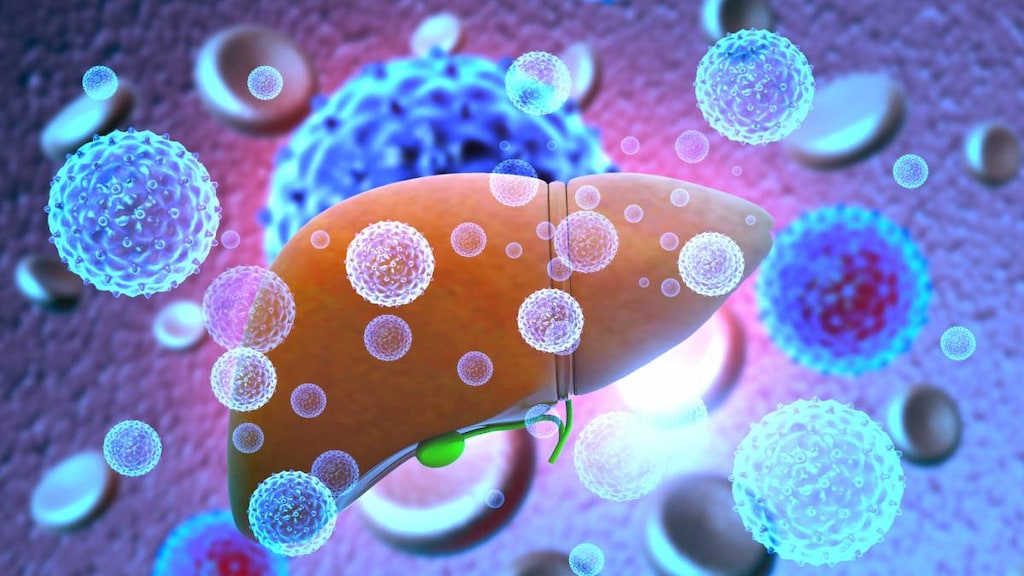The Cure for Hepatitis C: Treatment Options Explored

Of all the different forms of hepatitis, a hepatitis C diagnosis may have the greatest impact on your life. That’s because 75 to 85 percent of people who get the infection develop chronic hepatitis C, which means that without treatment, you’re stuck with the illness for life.
All about hepatitis C
Like other forms of hepatitis, the disease comes from a virus that attacks the liver. It’s most often passed on through blood-to-blood contact with an infected person, though it also can spread by sharing of other bodily fluids. This includes having unprotected sex with someone with hepatitis C, sharing drug needles or sharing other items such as razors, nail clippers or toothbrushes. Children can also be born with hepatitis C if their mother had the illness while pregnant with them.
If you develop an acute hepatitis C infection, you may show symptoms within a few months of getting infected with the virus. These can include fatigue, fever, diarrhea, nausea, vomiting, joint pain and jaundice, among others.
However, many people with chronic hepatitis C show no symptoms at all. Instead, the virus remains within the body, slowly damaging the liver. The result can ultimately be cirrhosis (liver scarring), liver failure or an increased risk for liver cancer. Because it’s difficult to detect, health experts recommend that many people be screened for hepatitis C, including those at a high risk of getting the disease and those born between 1945 and 1965.
The history of treating hepatitis C
Until fairly recently, the options for treating a chronic hepatitis C infection were, truthfully, not that great. Starting in the 1990s, the standard treatments to attempt to rid the body of hepatitis C were a combination of two drugs: an oral medication known as ribavirin and an injection called peginterferon alpha-2a or peginterferon alpha-2b. People on this treatment regimen would have to take a ribavirin pill twice daily and a peginterferon injection once a week for 24 to 48 weeks.
While this drug combination had some success, there were also many problems with it. For one, the treatment caused extensive and severe side effects. Regular ribavirin use can lead to anemia, fatigue, dizziness, confusion, shortness of breath, rapid heartbeat and chest pain. It could also make existing heart problems worse, and it was not recommended for pregnant women.
However, the peginterferon side effects could be even worse. Depression, anxiety, suicidal thoughts, hallucination, aggressive behavior, diarrhea, irregular heartbeat, weakness, loss of coordination, severe muscle or joint pain are all potential side effects of peginterferon use, along with several other potential symptoms. The medication could also worsen a wide number of existing medical conditions, including heart problems, diabetes and mental health conditions.
What’s more, you had to take these drugs for a long time to have any chance of curing your body of hepatitis C. Typically, treatment regimens lasted 24 to 48 weeks. In other words, you could be subjecting your body to these risks for close to a year.
In addition, the chances of the medications curing your illness were not guaranteed, either. Many times, the cure rate varied based on which genotype of the hepatitis C virus you had. If you had a combination of genotypes 2 and 3, for example, the cure rate could be as high as 76 percent after 24 weeks of therapy. But for the quite common genotype 1, cure rates hovered around 40 percent after 48 weeks of therapy.
The promise of direct-acting antiviral medicines
Clearly, the situation for those with chronic hepatitis C up until the early 2000s was not ideal, and there was significant room for improvement. In about 2011, that improvement came with the introduction of direct-acting antiviral medications. Medical professionals typically don’t use the word “revolutionary” very often, but it is not an exaggeration to say that these drugs were revolutionary for people with chronic hepatitis C on a number of levels.
There are currently more than a dozen direct-acting antivirals that your doctor may prescribe for hepatitis C. They all have names that end in “vir” (such as daclatasvir, simeprevir and more), and they may be taken in combination. But one thing is clear about these drugs: They represent a dramatic improvement in outcomes for those with chronic hepatitis C.
For instance, people typically take these drugs by mouth once a day, rather than having to receive a weekly injection. The drugs all pose a significantly lower risk of side effects than what was common with ribavirin and peginterferon treatment, which caused severe side effects.
But the best part is that these drugs really work. In fact, cure rates for chronic hepatitis C now range from 95 to 100 percent when someone is treated with these direct-acting antiviral medications. And that cure rate seems to hold true regardless of what genotype or combination of genotypes the person has. People often need to take these direct-acting antiviral medications for 8 to 24 weeks to cure hepatitis C.
The high cost of a cure
The news isn’t all good when it comes to these cutting-edge medications for hepatitis C, however. The current obstacle standing in the way of this treatment, notes the National Institutes of Health (NIH), is the cost. The medications can be quite costly and out of the range that most people can afford. What’s more, the Mayo Clinic notes that some insurers are hesitant to cover the drugs unless the person is showing signs of liver damage, such as cirrhosis.
The key to successful treatment, the Mayo Clinic notes, is to work closely with a trusted doctor to get the treatment that you need. The NIH adds that many states, drug companies and nonprofit organizations can help in paying for needed medications. Be sure to ask your doctor about any of these opportunities that might be available to you.
Preventing hepatitis C
Though outcomes for chronic hepatitis C have improved dramatically in the past decade, there are still some obstacles standing in the way of the eradication of the disease.
The good news about hepatitis C is that you can protect yourself from the disease by making good lifestyle choices. Hepatitis C is typically transmitted via exposure to an infected person’s blood, so activities like sharing drug needles, razors, toothbrushes or nail clippers can put you at the greatest risk. Having unsafe sex with multiple partners is another risk factor for hepatitis C, as is having to care for someone who has the disease.
While there is currently no vaccine to protect people from hepatitis C, the NIH notes that researchers are currently working on one. They also recommend discussing the hepatitis A and B vaccines with your doctor, as they may provide protection if you’re at risk of getting hepatitis.
The bottom line on hepatitis C treatments
When it comes to a cure for hepatitis C, the medical community has come a long way in a short time. What used to be an arduous medication regimen with severe side effects and a questionable outcome has now become a shorter, safer and more effective treatment, thanks to the advent of direct-acting antiviral medications. Though cost is still a major hurdle for these medications, this development certainly gives hope to those living with chronic hepatitis C.
Article references
- Hepatitis C, NIH, 2019. https://www.niddk.nih.gov/health-information/liver-disease/viral-hepatitis/hepatitis-c#vaccine
- Dahiya M, Hussaini T, Yoshida EM. The Revolutionary Changes in Hepatitis C Treatment: A Concise Review. BCMJ 2019;61(2):72-77. https://www.bcmj.org/articles/revolutionary-changes-hepatitis-c-treatment-concise-review
- Ribavirin, U.S. National Library of Medicine, 2016. https://medlineplus.gov/druginfo/meds/a605018.html
- Peginterferon Alfa-2a Injection, U.S. National Library of Medicine, 2016. https://medlineplus.gov/druginfo/meds/a605029.html
- Peginterferon Alfa-2b (PEG-Intron), U.S. National Library of Medicine, 2016. https://medlineplus.gov/druginfo/meds/a605030.html
- Daclatasvir, U.S. National Library of Medicine, 2018. https://medlineplus.gov/druginfo/meds/a615044.html
- Most patients with HCV cured with new drugs — but at what price? Mayo Clinic, 2016. https://www.mayoclinic.org/medical-professionals/digestive-diseases/news/most-patients-with-hcv-cured-with-new-drugs-but-at-what-price/mac-20430491


